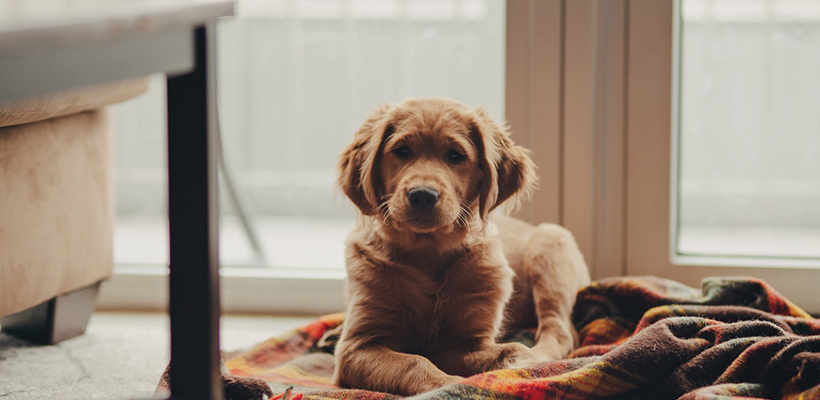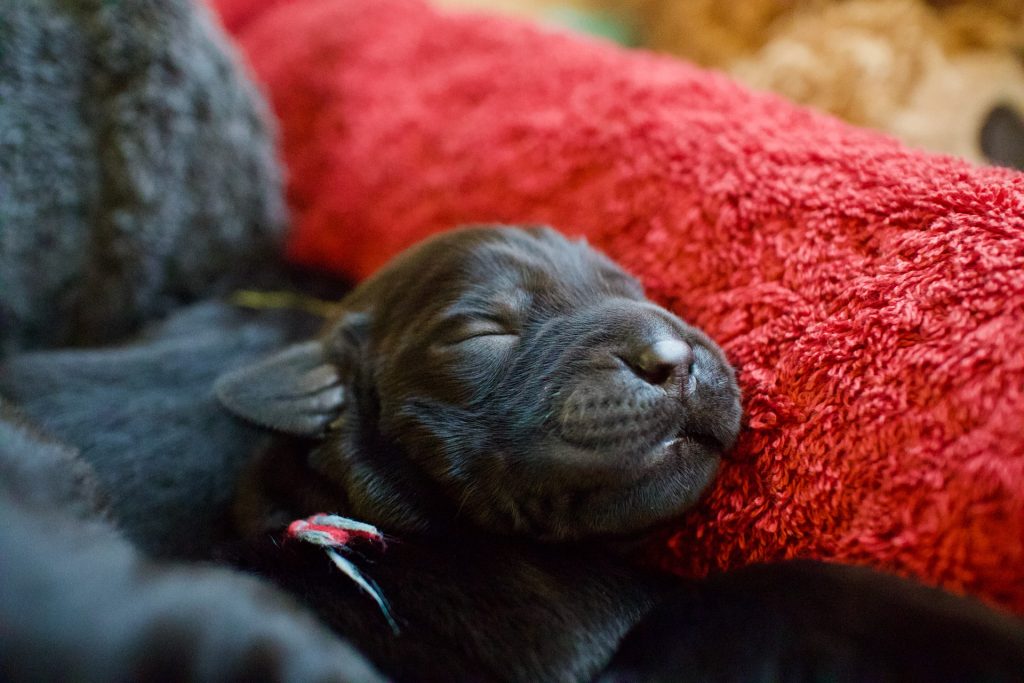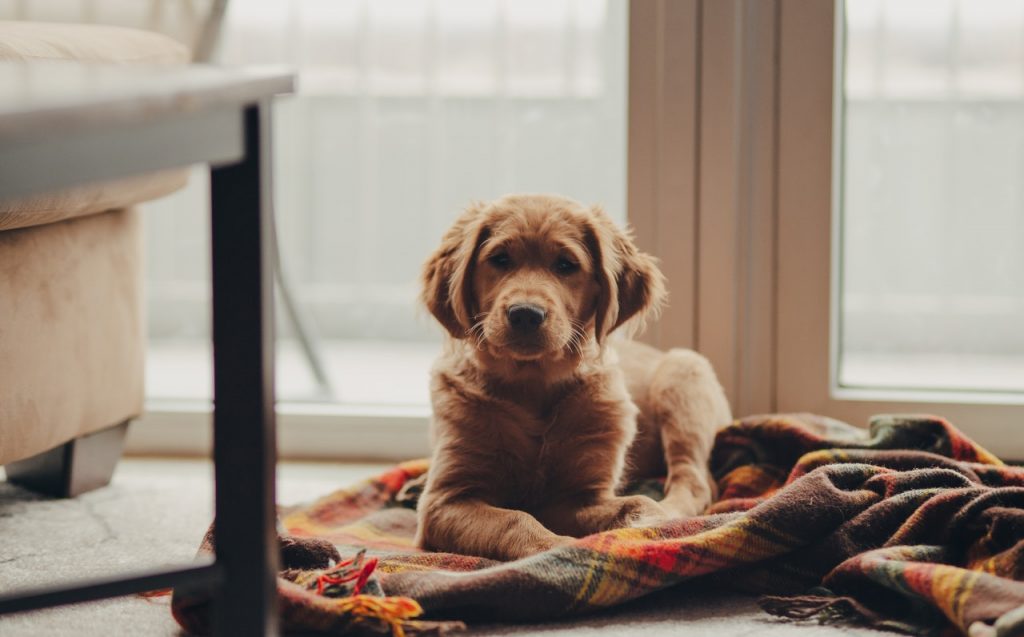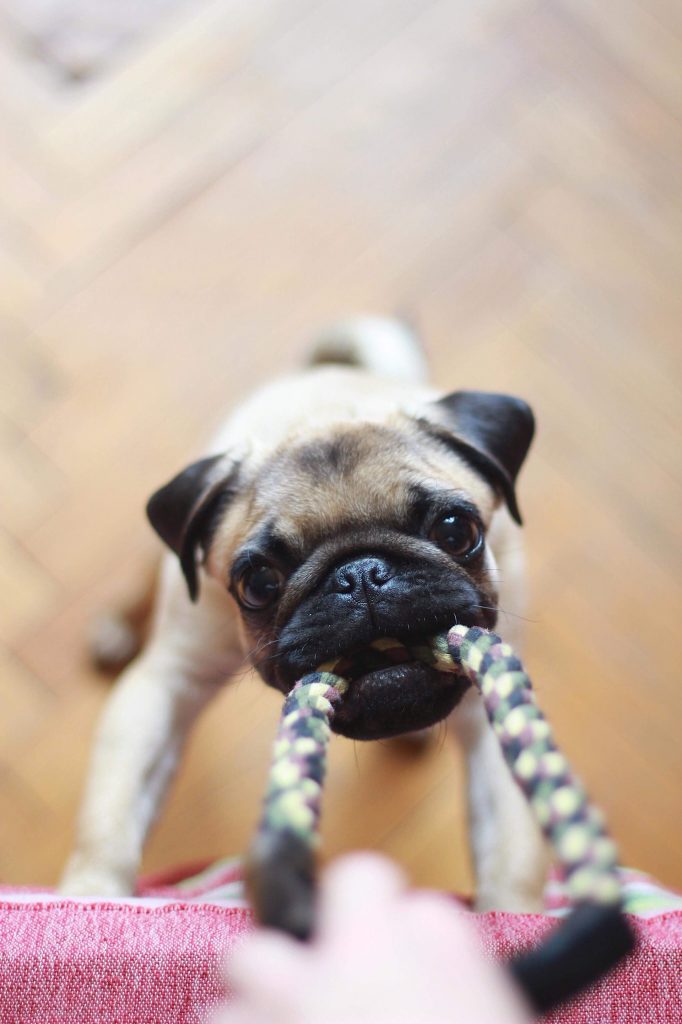
This article was contributed by guest writer Robert Thomas (Dog Agility Trainer).
3 Ways to Teach Alone Time to A Puppy
Dogs are the ultimate companion animal, which can be both a blessing and a curse for the humans who love them.
On the one hand, it is almost impossible to be angry at a puppy who loves you so much that they want to be in the room with you all the time, ideally climbing all over you, cuddling and generally being the center of attention. This is especially true of smaller puppies like teacup Poodles!
On the other hand, it is very easy to find that behavior annoying. That is why it is so important to start training your puppy to be able to spend time alone as soon as you can.
Obviously, you do not want to start intensive training on this as soon as your puppy arrives home – you two need time to bond first, and to make sure your puppy feels safe and comfortable in their new home.
Once they are settled in, though, there are a few different approaches you can use to help your puppy master the art of alone time.

Method #1: Crate training
Crate training may have developed something of an unsavory reputation as a way of “imprisoning” your puppy, but it is important to remember that dogs, unlike humans, are den animals, and your pup will love having a small, safe, cozy space they can chill out in. Make sure to deck out their crate so it can be this space for them – comfy blankets, beloved toys, anything that will tell your pup this is the place to be.
To start adjusting them to the crate, you can lure them in with treats, and then simply hang out with them in the crate and you right outside of it. Only once they are comfortable with being in the crate should you start closing the door, first for short stretches, increasing as they get more comfortable.
You can slowly acclimate them to being alone in the crate by increasing, with each session, either their time in the crate or how far away you are from it. Remember to give them lots of praise, pets and/or treats every time you let them out of the crate, to really reinforce that it is a positive place.

Method #2: Go To Place Training
Teaching you dog a “go to place” command can be useful for a number of reasons, including keeping your dog from jumping all over visitors and getting them out from underfoot in the kitchen or while you are moving things around. It is also a great tool to teach your pup alone time without a crate.
Similar to crate training, though, the first step is to get your pup to associate their “place” – a mat or a dog bed are great for this – with good things by rewarding them every time the so much as stand on it. Presenting treats and new toys on the place can also help build this association. Once your puppy is used to lying on their mat, again similar to crate training, the trick is to increase the amount of time they can contentedly hang out there by slowly upping how long you ask them to stay before giving them the release command.
Once they are fairly comfortable with laying on the mat, you can begin to leave the room, always praising and treating whenever you come back and your pup is still right where you left them.

Method #3: Self-Entertainment Training
Self-entertainment training involves, unsurprisingly, teaching your pup to entertain themselves with toys and chews while they wait for you to be ready to give them attention again. Ropes, bones, bully sticks, kongs, and puzzle toys are all great options for this kind of training. (Rawhide, though, should be avoided, as it can present a choking hazard.)
Start by giving the pup a bone, bully stick, or other gnawable treat, and letting them work on that while you occupy yourself, maybe in the next room. Food-motivated toys like kongs and puzzles are a good next step, and then your dog can graduate to self-entertaining with regular chew toys.
Once you are confident that your dog will happily gnaw on an approved item without pining for your company, you can introduce a method of confinement, like a baby gate, to help keep them on track while you are not within sight or earshot of your potentially mischievous canine. Here again, you will want to increase the amount of time you leave them alone slowly, always rewarding when you return to find they have been chewing on their kong and not your best shoes.
With a bit of patience and a lot of bully sticks, you will eventually have a pup who is perfectly content to spend a day without you, but also totally thrilled to see that you have come back at the end of it.
Summary
Training a puppy to spend time alone can be difficult, distressing when you listen to your pup express their heartrending sadness that you have abandoned them never to ever come back, and frustrating when they take out their newly discovered existential dread on the furniture.
However, it is a crucial skill for puppies who want to grow up to be a beloved family pet whose pet parents can afford dog food. It will take time and patience, but there is no reason your puppy cannot be trained to be totally happy on their own – and remember, no matter how good your puppy gets at being alone, seeing you come back and giving you cuddles will still always be their favorite part of the day. Every day.

Cecily (Kitty) Hughes
October 5, 2021 at 6:46 PMExcellent practical advice. I hope I will be disciplined enough to follow it!